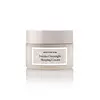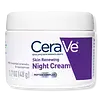What's inside
What's inside
 Key Ingredients
Key Ingredients

 Benefits
Benefits

 Concerns
Concerns

 Ingredients Side-by-side
Ingredients Side-by-side

Water
Skin ConditioningCaprylic/Capric Triglyceride
MaskingGlycerin
HumectantCaprylic/Capric/Myristic/Stearic Triglyceride
EmollientCetearyl Alcohol
EmollientSqualane
EmollientPropanediol
SolventGlyceryl Stearate
EmollientPolymethyl Methacrylate
Terminalia Ferdinandiana Fruit Extract
AntioxidantAmmonium Acryloyldimethyltaurate/Vp Copolymer
Caprylyl Glycol
EmollientAcrylates/C10-30 Alkyl Acrylate Crosspolymer
Emulsion StabilisingPhospholipids
Skin ConditioningSodium Hydroxide
BufferingTremella Fuciformis Sporocarp Extract
AntioxidantHyaluronic Acid
HumectantSphingolipids
EmollientSodium Dehydroacetate
PreservativePhenoxyethanol
PreservativeBetaine
HumectantHoney
HumectantPotassium Sorbate
PreservativePolysorbate 20
EmulsifyingHexylene Glycol
EmulsifyingWater, Caprylic/Capric Triglyceride, Glycerin, Caprylic/Capric/Myristic/Stearic Triglyceride, Cetearyl Alcohol, Squalane, Propanediol, Glyceryl Stearate, Polymethyl Methacrylate, Terminalia Ferdinandiana Fruit Extract, Ammonium Acryloyldimethyltaurate/Vp Copolymer, Caprylyl Glycol, Acrylates/C10-30 Alkyl Acrylate Crosspolymer, Phospholipids, Sodium Hydroxide, Tremella Fuciformis Sporocarp Extract, Hyaluronic Acid, Sphingolipids, Sodium Dehydroacetate, Phenoxyethanol, Betaine, Honey, Potassium Sorbate, Polysorbate 20, Hexylene Glycol
Water
Skin ConditioningGlycerin
HumectantCaprylic/Capric Triglyceride
MaskingButyrospermum Parkii Butter
Skin ConditioningDimethicone/Vinyl Dimethicone Crosspolymer
Skin ConditioningCyclopentasiloxane
EmollientGlyceryl Stearate Se
EmulsifyingCetyl Alcohol
EmollientDimethicone
EmollientSaccharide Isomerate
HumectantStearic Acid
CleansingPalmitic Acid
EmollientGlycine Soja Sterols
EmollientAllantoin
Skin ConditioningCeramide NP
Skin ConditioningCeramide AP
Skin ConditioningCeramide EOP
Skin ConditioningCarbomer
Emulsion StabilisingNiacinamide
SmoothingCetearyl Alcohol
EmollientBehentrimonium Methosulfate
Sodium Hydroxide
BufferingMyristic Acid
CleansingSodium Lauroyl Lactylate
EmulsifyingSodium Benzoate
MaskingSodium Citrate
BufferingSodium Hyaluronate
HumectantCholesterol
EmollientPhenoxyethanol
PreservativeTocopherol
AntioxidantTripeptide-1
Skin ConditioningLaureth-9
EmulsifyingCitric Acid
BufferingCaprooyl Tetrapeptide-3
Skin ProtectingBiosaccharide Gum-1
HumectantPhytosphingosine
Skin ConditioningXanthan Gum
EmulsifyingDextran
Ethylhexylglycerin
Skin ConditioningButylene Glycol
HumectantWater, Glycerin, Caprylic/Capric Triglyceride, Butyrospermum Parkii Butter, Dimethicone/Vinyl Dimethicone Crosspolymer, Cyclopentasiloxane, Glyceryl Stearate Se, Cetyl Alcohol, Dimethicone, Saccharide Isomerate, Stearic Acid, Palmitic Acid, Glycine Soja Sterols, Allantoin, Ceramide NP, Ceramide AP, Ceramide EOP, Carbomer, Niacinamide, Cetearyl Alcohol, Behentrimonium Methosulfate, Sodium Hydroxide, Myristic Acid, Sodium Lauroyl Lactylate, Sodium Benzoate, Sodium Citrate, Sodium Hyaluronate, Cholesterol, Phenoxyethanol, Tocopherol, Tripeptide-1, Laureth-9, Citric Acid, Caprooyl Tetrapeptide-3, Biosaccharide Gum-1, Phytosphingosine, Xanthan Gum, Dextran, Ethylhexylglycerin, Butylene Glycol
 Reviews
Reviews

Ingredients Explained
These ingredients are found in both products.
Ingredients higher up in an ingredient list are typically present in a larger amount.
This ingredient is an emollient, solvent, and texture enhancer. It is considered a skin-softener by helping the skin prevent moisture loss.
It helps thicken a product's formula and makes it easier to spread by dissolving clumping compounds.
Caprylic Triglyceride is made by combining glycerin with coconut oil, forming a clear liquid.
While there is an assumption Caprylic Triglyceride can clog pores due to it being derived from coconut oil, there is no research supporting this.
Learn more about Caprylic/Capric TriglycerideCetearyl alcohol is a mixture of two fatty alcohols: cetyl alcohol and stearyl alcohol. It is mainly used as an emulsifier. Emulsifiers help prevent the separation of oils and products. Due to its composition, it can also be used to thicken a product or help create foam.
Cetearyl alcohol is an emollient. Emollients help soothe and hydrate the skin by trapping moisture.
Studies show Cetearyl alcohol is non-toxic and non-irritating. The FDA allows products labeled "alcohol-free" to have fatty alcohols.
This ingredient is usually derived from plant oils such as palm, vegetable, or coconut oils. There is debate on whether this ingredient will cause acne.
Due to the fatty acid base, this ingredient may not be Malassezia folliculitis safe.
Learn more about Cetearyl AlcoholGlycerin is already naturally found in your skin. It helps moisturize and protect your skin.
A study from 2016 found glycerin to be more effective as a humectant than AHAs and hyaluronic acid.
As a humectant, it helps the skin stay hydrated by pulling moisture to your skin. The low molecular weight of glycerin allows it to pull moisture into the deeper layers of your skin.
Hydrated skin improves your skin barrier; Your skin barrier helps protect against irritants and bacteria.
Glycerin has also been found to have antimicrobial and antiviral properties. Due to these properties, glycerin is often used in wound and burn treatments.
In cosmetics, glycerin is usually derived from plants such as soybean or palm. However, it can also be sourced from animals, such as tallow or animal fat.
This ingredient is organic, colorless, odorless, and non-toxic.
Glycerin is the name for this ingredient in American English. British English uses Glycerol/Glycerine.
Learn more about GlycerinPhenoxyethanol is a preservative that has germicide, antimicrobial, and aromatic properties. Studies show that phenoxyethanol can prevent microbial growth. By itself, it has a scent that is similar to that of a rose.
It's often used in formulations along with Caprylyl Glycol to preserve the shelf life of products.
Sodium Hydroxide is also known as lye or caustic soda. It is used to adjust the pH of products; many ingredients require a specific pH to be effective.
In small amounts, sodium hydroxide is considered safe to use. However, large amounts may cause chemical burns due to its high alkaline.
Your skin has a natural pH and acid mantle. This acid mantle helps prevent harmful bacteria from breaking through. The acid mantle also helps keep your skin hydrated.
"Alkaline" refers to a high pH level. A low pH level would be considered acidic.
Learn more about Sodium HydroxideWater. It's the most common cosmetic ingredient of all. You'll usually see it at the top of ingredient lists, meaning that it makes up the largest part of the product.
So why is it so popular? Water most often acts as a solvent - this means that it helps dissolve other ingredients into the formulation.
You'll also recognize water as that liquid we all need to stay alive. If you see this, drink a glass of water. Stay hydrated!
Learn more about Water